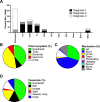Emergency medical care of incarcerated patients: Opportunities for improvement and cost savings
- PMID: 32339213
- PMCID: PMC7185724
- DOI: 10.1371/journal.pone.0232243
Emergency medical care of incarcerated patients: Opportunities for improvement and cost savings
Abstract
In the United States (US), the lifetime incidence of incarceration is 6.6%, exceeding that of any other nation. Compared to the general US population, incarcerated individuals are disproportionally affected by chronic health conditions, mental illness, and substance use disorders. Barriers to accessing medical care are common in correctional facilities. We sought to characterize the local incarcerated patient population and explore barriers to medical care in these patients. We conducted a retrospective, observational cohort study by reviewing the medical records of incarcerated patients presenting to the adult emergency department (ED) of a single academic, tertiary care facility with medical or psychiatric (med/psych) and trauma-related emergencies between January 2012 and December 2014. Data on demographics, medical complexity, trauma intentionality, and barriers to medical care were analyzed using descriptive statistics, unpaired student's t-test or one-way analysis of variance for continuous variables, and chi-square analysis or Fisher's exact test as appropriate. Trauma patients were younger with fewer medical comorbidities and were less likely to be admitted to the hospital than med/psych patients. 47.8% of injuries resulted from violence or were self-inflicted. Most trauma-related complaints were managed by the emergency medicine physician in the ED. While barriers to medical care were not correlated with hospital admission, 5.4% of med/psych and 2.9% of trauma patients reported barriers as a contributing factor to the ED encounter. Med/psych patients commonly reported a lack of access to medications, while trauma patients reported a delay in medical care. Trauma-related presentations were less medically complex than med/psych-related complaints. Medical management of most injuries required no hospital resources outside of the ED, indicating a potential role for outpatient management of trauma-related complaints. Additional opportunities for health care improvement and cost savings include the implementation of programs that target violence, prevent injuries, and promote the continuity of medical care while incarcerated.
Conflict of interest statement
While author NT is currently employed with Medical Associates LLC, she had no affiliation with this commercial entity at the time of her contribution to this manuscript. University of Tennessee College of Medicine at Chattanooga provided support in the form of salaries for NT, JW, and RM, but did not have any additional role in the study design, data collection and analysis, decision to publish, or preparation of the manuscript. ApolloMD provided salaries for JW and RM, but did not have any additional role in the study design, data collection and analysis, decision to publish, or preparation of the manuscript. RM owns a small number of shares in Merck (42.618 shares) and Proctor and Gamble (51.27 shares), which were purchased for her when she was a minor and are not relevant to this research study. Our commercial entity affiliations do not alter our adherence to PLOS ONE policies on sharing data and materials. We feel authors’ contributions are accurately reflected as documented in our manuscript submission.
Figures






References
-
- Wagner P, Sawyer W. Mass Incarceration: The Whole Pie 2018. 2018 [cited 2018 April 22]. Available from: https://www.prisonpolicy.org/reports/pie2018.html.
-
- Wagner P, Walsh A. The States of Incarceration: The Global Context 2016. prisonpolicy.org. 2016 [cited 2018 April 15]. Available from https://www.prisonpolicy.org/global/2016.html.
-
- China tops world execution list but true number of killings remains a mystery. News 7 Apr 2017 [cited 2018 June 12]. Available from: http://www.abc.net.au/news/2017-04-11/china-tops-world-execution-list-bu....
Publication types
MeSH terms
LinkOut - more resources
Full Text Sources
Medical

